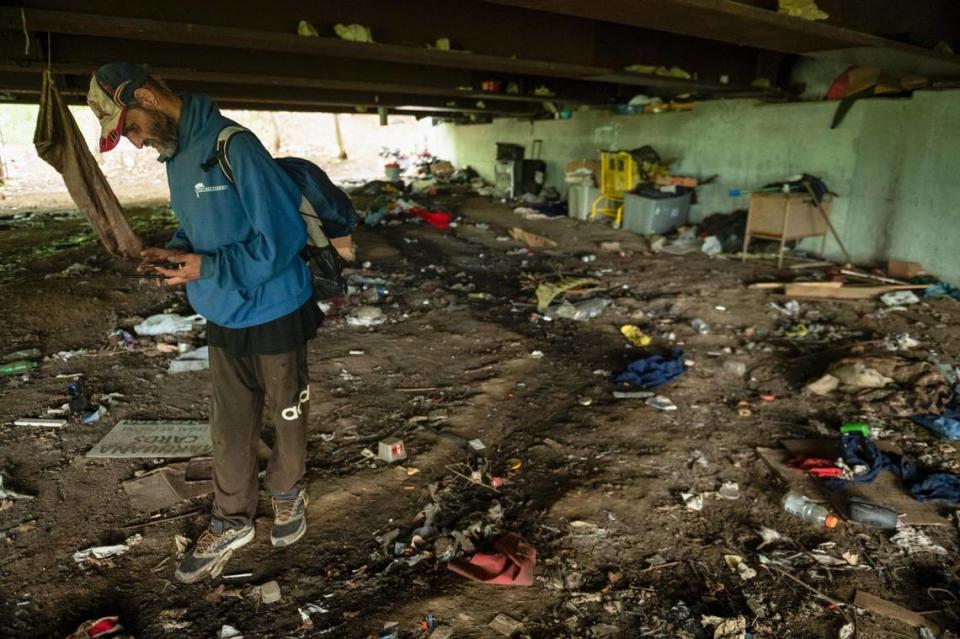They were shot, then sent back to KC streets. Why lack of help for homeless costs everyone
As Ken Simard ducked under the bridge where he sleeps, a small “S”-shaped scar peeked out from under his shirt, a permanent reminder of where he was shot by another man also experiencing homelessness.
For Simard, 46, it’s the freshest wound in a lifetime of injury that led to his residing beneath a busy boulevard south of Brush Creek for the past six years.
It’s also a reminder that systems built to support victims of violent crime in Kansas City, already lean on resources, weren’t created with the homeless community in mind.
As he lay in the hospital in January, Simard said he was told he did not qualify for Crime Victims’ Compensation. The problem? He had nothing to lose, so he had nothing to gain back through the federally funded program. Since he did not have a job, he did not lose wages he could be compensated for.
And while he was an excellent candidate for medical respite care — for unhoused people well enough to be released from the hospital but not healthy enough to return to the streets — no one connected him with it. Even if he had known about the city’s four medical respite beds, there’s no guarantee one would have been vacant.
In a city with an estimated 2,000 people experiencing homelessness, there are not enough medical respite beds to serve everyone in need, advocates and city leaders say. And it costs everyone, from hospitals to insurance providers and taxpayers to those literally left out in the cold.
Some Kansas City leaders are trying to remedy that, hoping a recent ordinance approved by City Council will pave the way for the city to invest millions of dollars in a program that, in part, would create more medical respite beds and accompanying staff for those who are unhoused. But that goal is still far from reality.
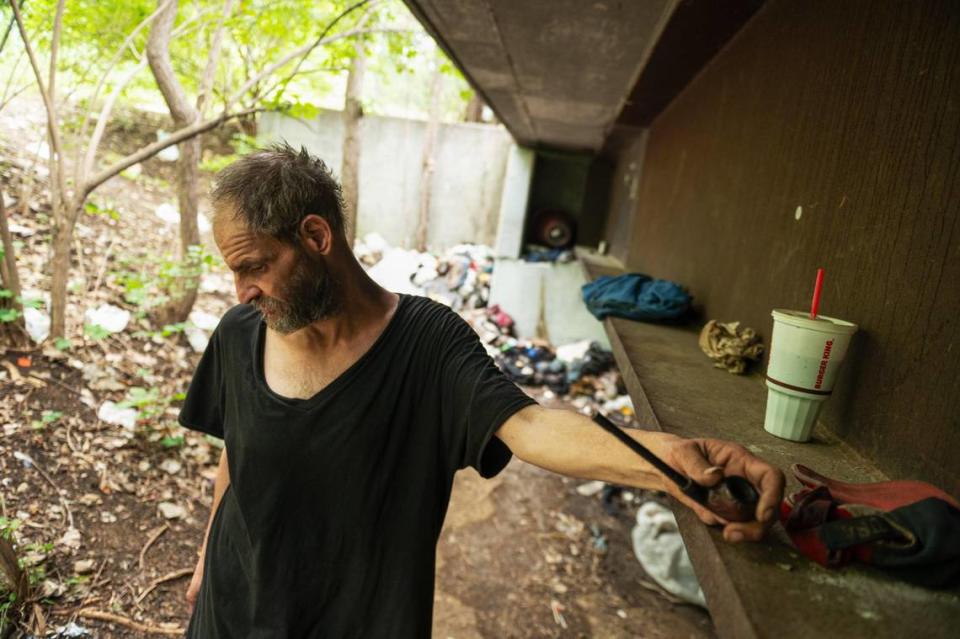
Simard’s story: ‘People who need help’
The pain set in as a paramedic cut off his jacket — one of the only family gifts in Simard’s possession. Moments earlier, on Jan. 13, Simard was walking down the sidewalk after missing a bus to a doctor’s appointment. That’s when a stranger shot him.
Simard was taken to St. Luke’s Hospital where he said he was “pretty much spoiled rotten” by the warm bed and consistent meals. When a detective came by and asked if he wanted to press charges, he said “Hell, yes.”
They removed the bullet at the hospital, leaving a raw hole in a hard-to-reach place. Simard was given a cervical collar after doctors discovered the bullet chipped one of his vertebrae. He was sent “home” with gauze, alcohol pads, disinfecting instructions, packing and other basic cleansing products. He said the hospital recommended he find respite care.
A friend, Lulu Livingston, who until about two years ago was homeless too, said she called around asking for help. Finding none, she insisted he stay with her for a few days so she could help disinfect his wound.
“There’s an overabundance of people who need help. I’m tired of screaming from the rooftops,” she said. “He doesn’t belong under a bridge.”
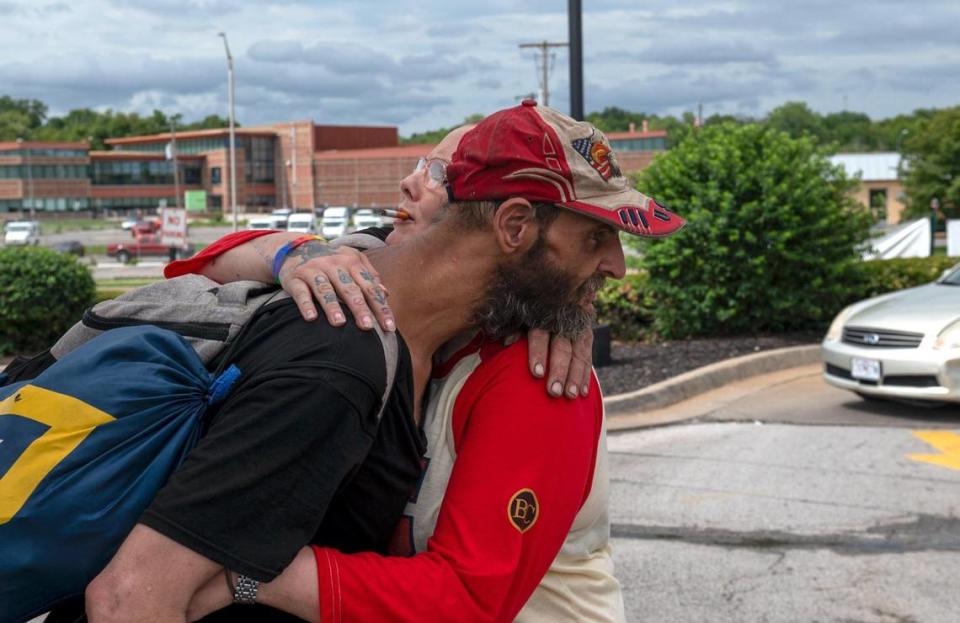
When Simard returned to his spot under the bridge a few days later with the collar still around his neck, he found everything gone. His tents. His clothes. His phone charger. His birth certificate.
“What the hell am I going to do now?” he remembers asking himself, in shock, before curling up against the concrete on the driest spot of dirt he could find.
He’s rebuilt some possessions since. The path from the closest bus stop to Simard’s makeshift shelter passes over a busy, sidewalk-less road, through overgrown brush and under an overpass. The ground is filthy with trash and mud, conditions ripe for infection.
Despite Simard’s best efforts to clean up, it still looks like a dumping ground. Junk including empty cigarette boxes, dirty masks and snack wrappers lay scattered on either side of a shallow trench he dug to direct water flow away from where he sleeps.
Simard told The Star in late September that hope is hard to come by these days. A trained cook, he said he can handle the summer heat. It’s the bitter winter cold that he fears will one day kill him.
A friend suggested Simard sue the man who shot him.
“I’m sure he’s just somebody like me who ain’t got s--t,” Simard said as he held a pipe in one hand, the stem replaced by a pen.
Court records show a man named Quincy Austin is charged with first-degree assault and armed criminal action in Simard’s shooting. Austin is also homeless. Charging documents list his address as City Union Mission, a shelter.
Austin’s trial is currently set for Dec. 11, two days before Simard’s 47th birthday.
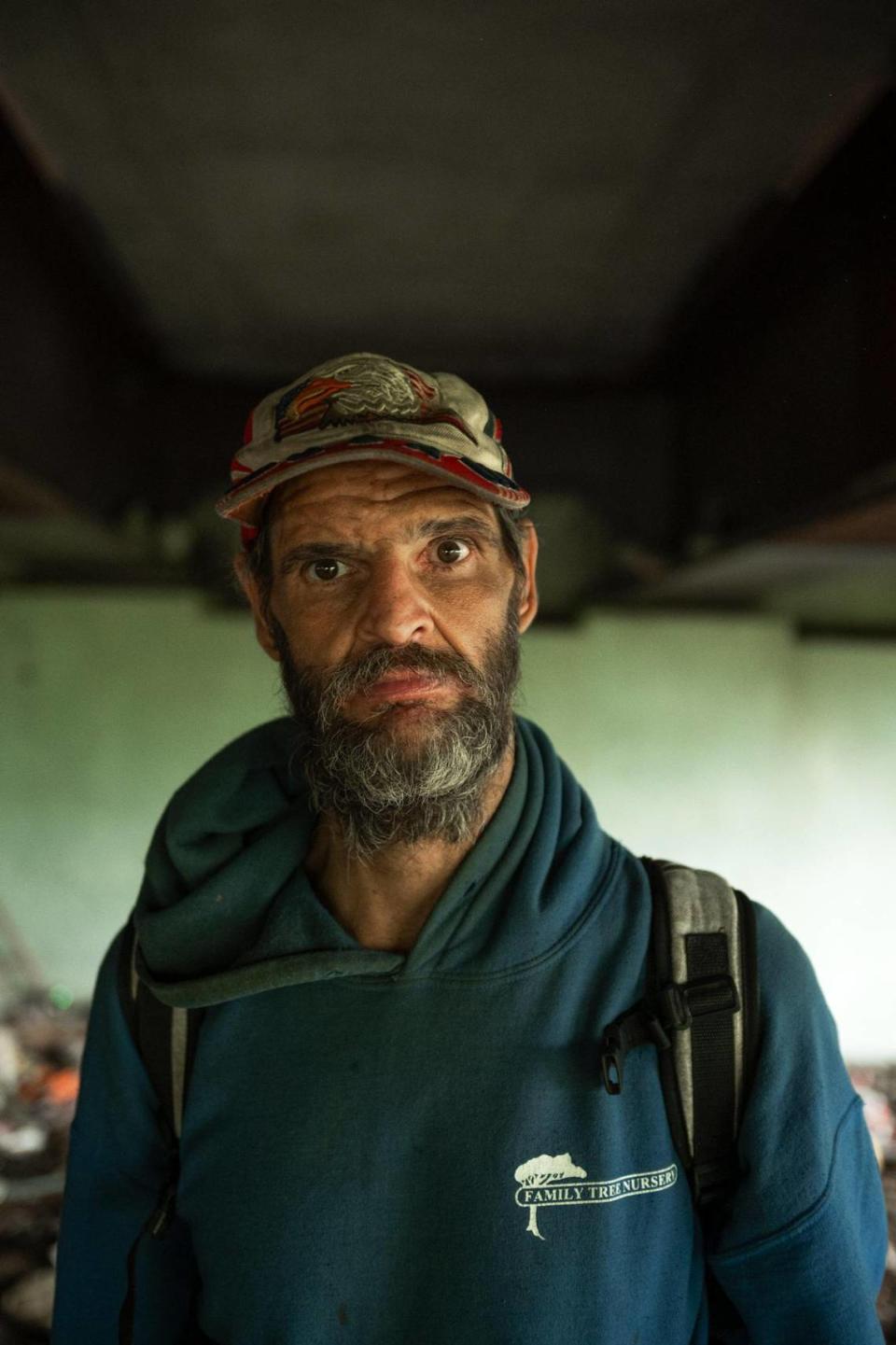
Medical respite care
ALL INside, the Biden administration’s plan to reduce the number of people experiencing homelessness by 25% by 2025, includes a recommendation to increase access to medical respite care, which offers both a safe, secure place for healing and a pathway to housing. But it’s a big goal.
“It is still an uphill battle despite the fact that this has become a priority of the Biden administration,” said Katie League, with National Health Care for the Homeless Council.
Medical respite can exist inside homeless shelters, nursing homes, individual buildings or transitional housing. But it remains limited in most places because it necessitates more than a physical bed. It requires medical knowledge and staffing.
“Medical respite is just one of these incredible things where we know how well it works, and there’s just not really a straight line of funding for them,” League said, adding that once people are released from hospitals, many fall into “this abyss of no care.”
League said one of the solutions is hospitals, which she said are “instrumental” to starting many medical respite programs nationwide.
“What are we doing to make sure we’re not sending them back to the situation that they were just victimized in?” she asked. “If all somebody cares about is the bottom line, it is not the most cost effective use of any of these resources just to put somebody in the position where it is likely that the cycle will continue.”
In Springfield, Carol Daniel is respite manager and founder of Women’s Medical Respite. She said getting support from the hospitals has been crucial to their success, helping them soon expand from three to eight beds.
Caitlin Synovec, assistant director of medical respite at the National Institute for Medical Respite Care, said the number of programs across the country has doubled from about 75 in 2017 to about 150 now. The pandemic and the strain it put on hospital beds demonstrated the importance of the care model.
She said hospitals benefit the most from respite care after patients. They save money by decreasing the patient’s length of stay and the likelihood the person returns to the hospital or emergency department, and by connecting them with a primary care provider for preventative health care.
It’s in part why local hospital systems are often the largest funding source for medical respite across the country, Synovec said.
But that’s not the case in Kansas City.
Jaynell Assmann, the founder of Care Beyond the Boulevard, a nonprofit that provides medical care to the homeless community, recently established what’s currently the only homeless medical respite program in Kansas City. It’s funded solely by her nonprofit.
Like hospitals, the work they’re doing is life-saving. Assmann recently got a call from Olathe Medical Center, where a homeless patient was in need of bypass heart surgery. The hospital couldn’t perform the surgery until the patient could show he had an address. Care Beyond the Boulevard put him in respite for six weeks, then helped him secure transitional housing.
But Assmann doesn’t have enough resources to help everyone.
“We have people who are dying on the streets because they don’t have any options, and that’s not right,” said Assmann, known to many unhoused community members as “Nurse KK.” Assmann dreams of building a free-standing medical respite facility. But it’s an expensive undertaking — millions of dollars a year — for a nonprofit.
For now, Care Beyond the Boulevard operates with limitations. While it provides hot meals, wound care, doctor’s visits and a volunteer physical therapist (Assmann’s daughter), the nonprofit doesn’t have 24/7 nursing care and it’s not set up to take oxygen.
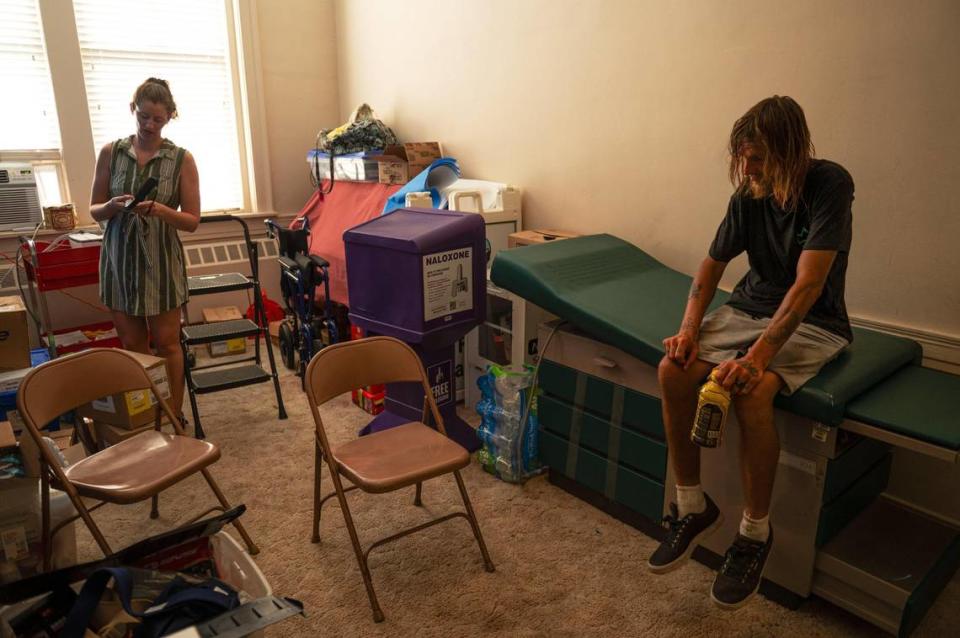
In the nearly two years since opening respite rooms at Lotus Care House, Assmann said beds have been given to victims of shootings, car crashes, bike crashes and fires, as well as those with illness, including patients undergoing chemotherapy for cancer. The average length of stay is six to eight weeks.
Word is getting around that medical respite beds are available in Kansas City. Assmann said she often gets two or three calls a week from hospitals asking if she has an open bed. Some weeks, it’s many more.
Assmann said she’s asked hospitals for financial help to expand the program, but so far has been denied.
Jill Chadwick, a spokeswoman for The University of Kansas Health System, said while the hospital’s goal is a safe discharge, including by connecting unhoused patients to resources like shelter, mental health support and safety net clinics, availability is limited.
“When patients have a change in their functional status or increase in care needs based on a medical condition, there are often very limited options for safe discharge planning, especially for those with vulnerabilities such as housing stability, financial concerns, and food and safety,” she said.
Chadwick said starting next year, the hospital will be screening patients for more social determinants of health, including food and shelter insecurity, in the hopes of better meeting their needs upon discharge.
Christine Hamele, a spokeswoman with HCA Midwest Health, which oversees Research Medical Center, did not respond to specific questions, but said in a statement that the hospital has a safe discharge planning process that includes community partnerships that help with healing in the long term.
St. Luke’s and University Health did not provide responses to multiple requests for comment over several weeks.
Culp’s story: ‘A nightmare’
In December, Chris Culp, 35, was shot at a Kansas City homeless encampment. The bullet tore through his left arm, traveled through his side and ripped into part of his lung, stomach and spleen. A pastor rushed to the hospital to pray over him. He survived.
When discharged from University Health, formerly Truman Medical Center, Culp was given bandages and medicine. A medical professional told Culp his diet needed to change and that he shouldn’t lift anything heavy, he recalled. Culp said he told the hospital his situation: He lived in a tent in the woods. He ate at soup kitchens. It was the dead of winter. He said they told him there was nothing else they could do to keep him there.
Back at his tent, Culp worried about infections. Struggling to breathe with a damaged lung, he feared the campfire and cigarette smoke around him might make it worse.
Back on the street, he held a sign up to passing cars that read, “I got shot for Christmas.”
Mondays, he headed to a church off Independence Avenue where Care Beyond the Boulevard volunteers changed his bandages.
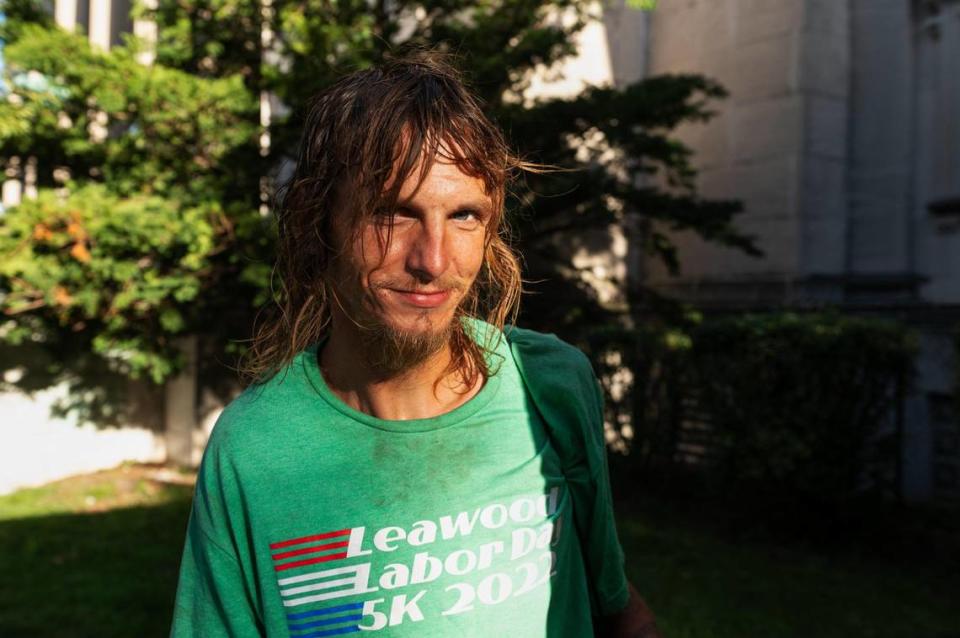
On Jan. 10, finally well enough to ride a bicycle again, Culp was passing through Kansas City, Kansas, when he was run over by an SUV.
He said he woke up three days later from a medically induced coma at The University of Kansas Health System as hospital workers removed a tube from his mouth. All of his ribs were broken. It took a major surgery that left a huge scar across his chest for doctors to fuse the bones back together, he said. His leg was also broken, so doctors inserted a metal rod near his knee.
When he was released about three weeks later, Culp said he left the hospital wearing nothing but a paper gown and leaning on a walker.
“It was a nightmare,” he said. “There was still snow on the ground.”
He got on the nearest bus, where he collapsed. He said an ambulance took him to AdventHealth Shawnee Mission. He was there for about two weeks before he signed himself out, homesick for his girlfriend. He wasn’t back on the street for long before he caught a bus to Research Medical Center, where he stayed for a few more weeks.
Back at his encampment, Culp forced himself to leave to find food, but was so weak and in pain he could barely walk.
“If the ship goes down, we’re going to be the last people to get the lifeboat, basically,” Culp said.
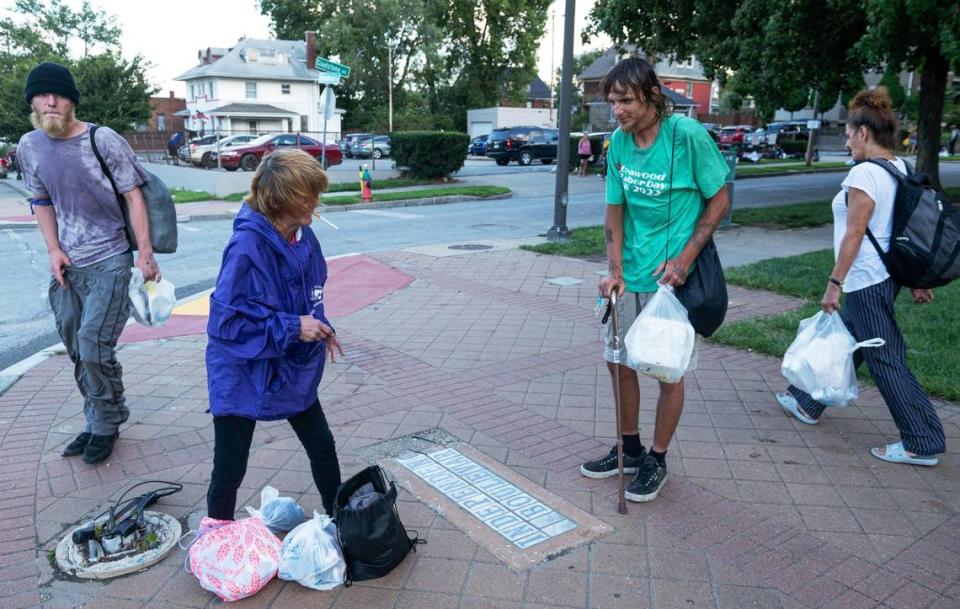
When Assmann with Care Beyond the Boulevard learned about Culp, she sought him out and brought him to one of her medical respite rooms at Lotus Care House. There, he got regular medical attention, started physical therapy and regained movement in his leg. He upgraded from a walker to a cane, which he still uses.
But healing his body is only part of his battle for survival.
Violence inflicted upon unhoused people is a major concern, but the Kansas City Police Department does not keep data on how many victims each year are homeless.
“To actually work on crime, you have to actually help the people who are being victimized instead of just putting Band-Aids on everything,” said Alina Heart, who volunteers with homeless outreach in the metro.
In February, James Perry, 59, called “Kirt” by his loved ones, was killed by another unhoused man in a shack near Berkley Riverfront. A few weeks later, Jesse Eckes, 52, who had long experienced homelessness, was sitting on a concrete traffic signal island when a reckless driver crashed into a police car, and then into Eckes, killing both him and the officer. In August, Phillip Roberts, 40, who was also experiencing homelessness, was shot and killed near an encampment on the east side.
A move to expand respite services
In late September, the City Council approved a plan to invest nearly $5 million in a program that would include a form of medical respite for community members struggling with addiction, many of whom are also homeless.
“This is something that the city desperately needs,” Josh Henges, Kansas City’s homelessness prevention coordinator, said ahead of the vote. “This ordinance, to me, represents a maturing of the conversation around homelessness because decision-makers are really resonating and waking up to the idea that street-level homelessness is more than just an economic issue. It is a health care issue.”
In mid-September, Mayor Pro-Tem Ryana Parks-Shaw, District 5, introduced the proposal to fund medically assisted treatment programs, safe haven beds and respite beds “to support the treatment and rehabilitation of individuals recovering from persistent substance use disorder, including those who are unhoused,” according to the proposed ordinance. In late September, the ordinance was approved by the full council.
Parks-Shaw, who is also chair of the city’s Unhoused Task Force, said this ordinance came about in part through a community needs assessment in which providers and organizations said they did not have the resources to shoulder this alone.
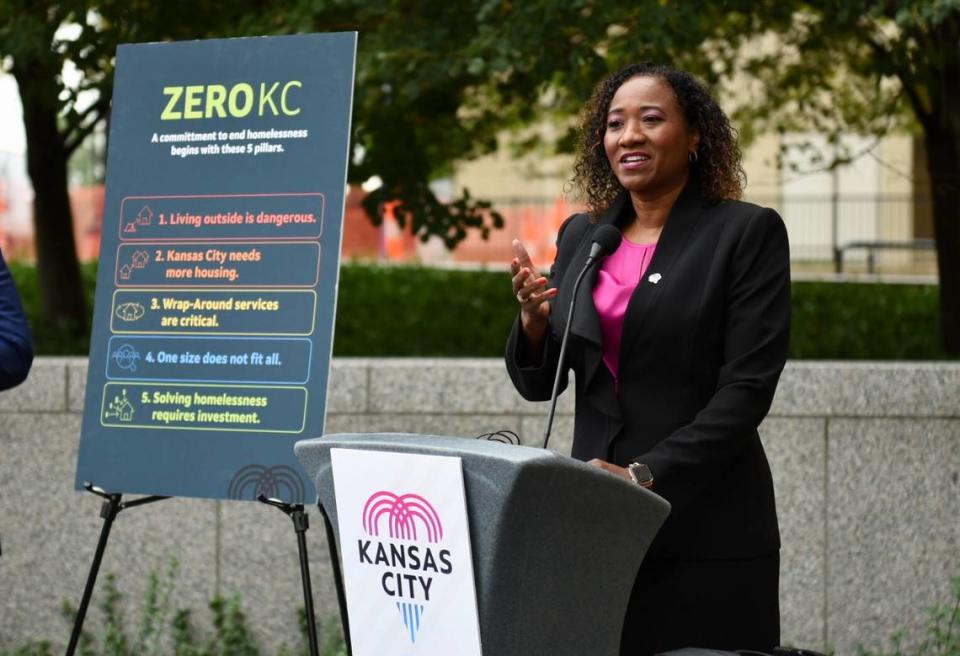
She does not envision creating anything new, necessarily, but rather ramping up support for organizations already doing the work.
“Unfortunately the opioid crisis has left many Kansas Citians in a bad situation, so ultimately what we’re trying to do is infuse and invest into programs that are proven to be successful to help fill the gaps that we have,” Parks-Shaw said.
The proposal is focused on those dealing with substance use disorder who are seeking support, rehabilitation and recovery, since the program is funded in part by the $15 million Kansas City received from the national opioid settlement against Johnson & Johnson.
While the proposed language is limited to those struggling with addiction, Assmann confirmed that most of the patients who come through Care Beyond the Boulevard’s medical respite program would qualify.
Assmann called the proposal “awesome.”
Parks-Shaw said the ultimate goal is to break the vicious cycle of addiction for those on the street and help them find housing.
Henges said by his estimate, the city needs 100 medical respite beds, but a reasonable start is 25 as they figure out how to pay for it, how to staff it and how to sustain it.
“It’s worth every penny,” he said, adding that a week in respite is cheaper than a week in a hospital.
Since first meeting with The Star, Culp has become housed. The process was aided by his time at Lotus Care House, where Assmann said his paperwork process was started again. She’s confident he wouldn’t be in housing today if not for the respite care.
Culp said he’s still healing.
On Monday nights, he still catches the bus to get physical therapy. On a rare cool evening in mid-August, the week he learned he was getting a home, he met with Assmann.
Culp leaned on his new cane as they moved through the hallway, bustling with people coming in for medical check-ups. Suddenly he stopped and slouched to the ground, overwhelmed with emotions. Assmann crouched beside him, speaking in soothing tones.
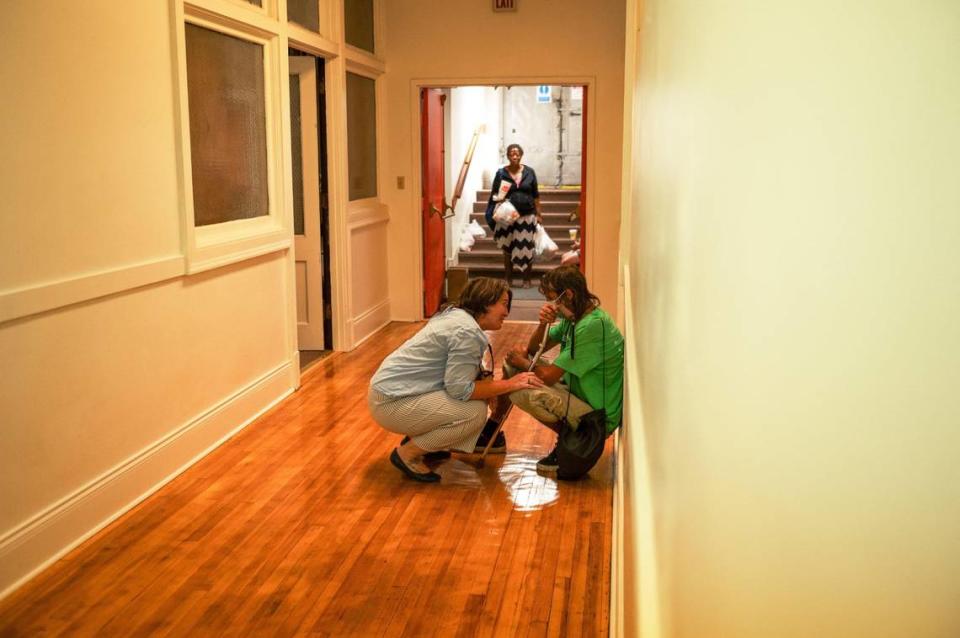
“PTSD is real. If I think about it too vividly, I start feeling, I mean it just starts bringing up, I’m a little shaky, but I can handle it,” Culp said a few weeks earlier. “It just still kind of sits with me.”
He’s thought about leaving Kansas City, but he’s tired of moving.
“But I still love Kansas City, I guess,” he said.
Simard, still living unsheltered, is skeptical of the ordinance, even though it would apply to him, since he said he has a substance use codependency, as well as a mental health disorder.
“You know what they say, this is the Show Me State,” he said. “I’ll believe it when I see it.”
